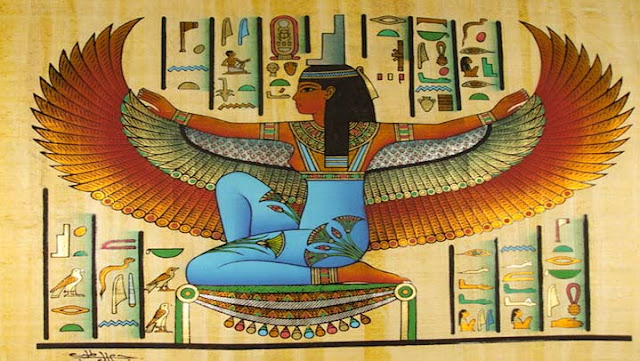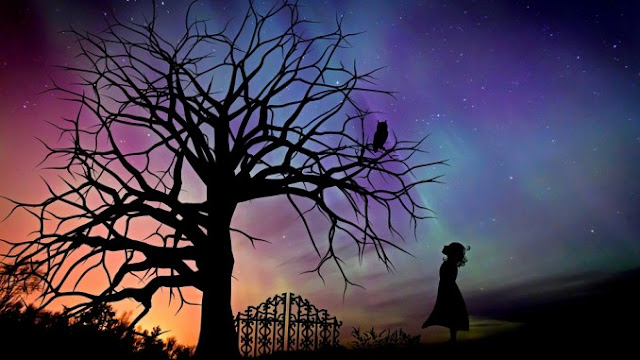5 Ancient Egyptian Deities, and What They Can Do For You
5 Ancient Egyptian Deities, and What They Can Do For You
Ancient Egypt is replete with mysticism, especially when we look at the theological lineage that the ancient era left behind from its heyday. There is no shortage of deities (Neteru) in the ancient Egyptian pantheon, and it is an area of study that is both fascinating and grossly misunderstood.
So who and what are the Egyptian neteru? Firstly, what they are not are literal persons who walked the Earth. Indeed, there could exist individuals in history who have embodied their attributes, and thus were written about, and set in place as the incarnation or personification of a certain god, but the neteru genesis derives from the ways of the natural world. There is something that must be understood about ancient spirituality, which is that the archetypes that we see today were just that: archetypes. Personified symbols for certain properties that are reflected in the natural world.
1. Anubis
We begin our list with the jackal-headed deity, Anubis (Anpu). He is black, mysterious and relatedly regarded as the representative and guardian of the underworld and of secrets. In ancient Kemetic (Egyptian) thought, he was a guide to the newly departed souls of the dead in their transition from one world to the next, and he was attributed to the process of mummification. Later in the history of Kemet, Anubis’ role of god of the underworld would be shared by another, however, Anubis continues to hold his attributes.
Use of the Anubis energy:
When doing work with transitioning from one stage of life (World) to another, one may invoke the guidance of Anubis to assist in bringing the intention through to one’s desired next phase, to mirror the act of crossing over from one world to the next, as Anubis would do with the newly departed souls.
2. Asar (Osiris)
The names of the ancient Egyptian gods that we are most familiar with tend to be the Greek iteration of the original Egyptian name. Asar, as he was known in ancient Egypt, might be more readily recognized as Osiris, the Kemetic neter who is most often depicted holding the crook and flail crossed in front of his chest. You may also know him as Orion, represented celestially as the well-known constellation in the night sky.
As we previously looked at the guardian of the realm of death in Anubis, here we enter the realm of life and resurrection with Osiris, although due to the myth that follows him, he too was associated with death and resurrection. Osiris is said to have brought agriculture to the land of Kemet, and after having his body broken up by Seth and scattered across the land, was put together again by his wife Aset (Isis). For this reason, Osiris is associated with death, as well as life and resurrection.
Use of Osiris energy:
Should there exist a situation in which that which comes to pass seems dead and gone, invoke the spirit of Osiris, who was resurrected by Isis, and breath new life into the endeavor.
3. Aset (Isis)
Osiris had a sister, who was also his wife, named Isis, or Aset in ancient Kemet. The Isis energy is very much the culmination of the feminine aspect. She is regarded as the deity of magick, wisdom, healing, love, marriage and so forth. As the daughter of Geb and Nut, Aset (Isis) is a goddess of wisdom, in contrast to intellectual knowledge—gnosis. This is also related to intuition, something the feminine aspect is more associated with than the masculine aspect.
When her husband Asar was scattered across the land of Kemet, she searched out his parts, and put him back together again. She nurtures and guides with feminine energy, which oversees creation, but also can command over destruction should it prove pertinent.
Use of Aset energy:
When encountering a situation where you may not know where to come or to go, just as Osiris was scattered across the land of Kemet, the invocation of the Aset energy can help to see things through by the nurturing, caring aspect of Aset—the sacred feminine. It is the aspect which, for example, seeks to give a flower water to help it grow, or which gives equal importance to each individual of a household. Use Aset to nurture your ventures to help them grow and prosper.
4. Heru (Horus)
As the off spring of Asar and Aset, Horus (or Heru) was said to become the first Pharaoh, and thus as Pharaohs followed, they were believed to be Heru reincarnated—they embodied the spirit of the god, as they ruled to Kemetic land. He slayed the adversary neter, Set, and established himself in the throne in his stead. The Kemetic form of the the word Horus, or Heru, is where we derive the word ‘Hero’, due to the myth that surrounds Heru which is as follows:
Asar (as we learned before is Osiris) was challenged by his brother Set, who defeated Asar, and scattered his body in 14 pieces across Kemet. Aser (Isis) searched and recovered her husband’s parts, except for his phallus, which is claimed to have been eaten by a fish. Upon his death, the spirit of Asar (or in some versions, his phallus) impregnated Aset, and they boar a child named Heru (Horus). He went on to challenge his uncle Set, seeking revenge on his father, and freeing the land from Set’s tyrannical rule. He succeeded, and placed himself on the throne as the first pharaoh, (as stated earlier).
Not only do we derive the word “hero” from Heru, but another familiar name is Hercules in its Greek transliteration.
Use of the Heru energy:
The energy of Heru is that of a fighter. As we saw in the myth, Heru avenged his father by combating and defeating Seth. When one has something to combat in their life, be it interpersonally, or a challenge of some sort, invoke the spirit of Heru to guide one through a tumultuous time.
5. Tehuti (Thoth, Dwty)
More commonly known as Hermes (once again, the Greek transliteration of an earlier concept), Tehuti (or Djehuti as it is more accurately pronounced—‘dwty’) is the god of writing, wisdom, magick and creation. He is the master, a creator who created himself. He created the word and was the word. “I am the Eternal...I am that which created the Word...I am the Word...”—The Egyptian Book of the Coming Forth by Day.
In the Pythagorean tradition, the disciplines known as ‘The Seven Liberal Arts’ (Grammar, Rhetoric, Logic, Arithmetic, Geometry, Harmonics/Music, Astronomy) are attributed to Hermes (Tehuti) by way of Hermeticism, where in Hermeticism ‘The Seven Liberal Arts’ were birthed from ‘The Seven Hermetic Principles’. The Seven Hermetic Principles are Mentalism, Correspondence, Vibration, Polarity, Gender, Rhythm, and Cause and Effect. One who is initiated in the Seven Hermetic Principles will reach the understanding of the workings of reality in a most profound and life changing way. To some extent, the Seven Hermetic Principles are the root influence for spirituality throughout all the cultures of the world.
Use of the Tehuti energy:
The energy of Tehuti uses knowledge and gnosis to operate within this world, thus this archetype should oversee all aspects of one’s endeavors in this world. One should go forth as a ‘Thothian’—one who utilizes The Seven Liberal Arts as well as The Seven Hermetic Principles to accomplish anything in this life.
Further reading/sources:
https://exemplore.com/spirit-animals/Egyptian-Mythology-Ancient-Egyptian-Jackals
http://www.nekhebet.com/r_gods1.html
https://www.ancient-code.com/5-worshiped-ancient-egyptian-gods-goddesses/
http://arf-int.net/index.php/khemetology/arf-patron-neteru/tehuti
https://2bcreative.org/?page_id=2092
https://thesevenworlds.wordpress.com/tag/tehuti/







Comments
Post a Comment